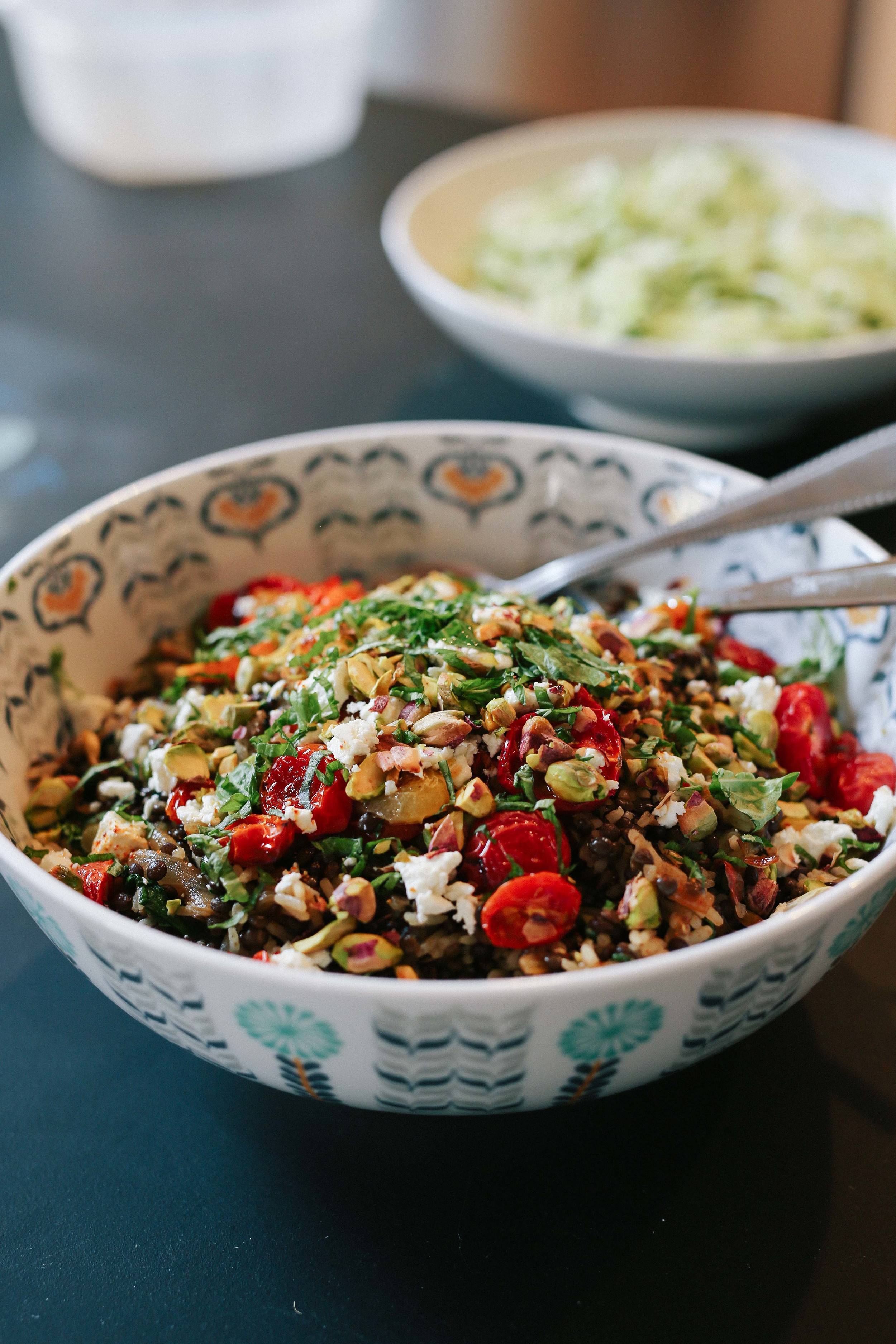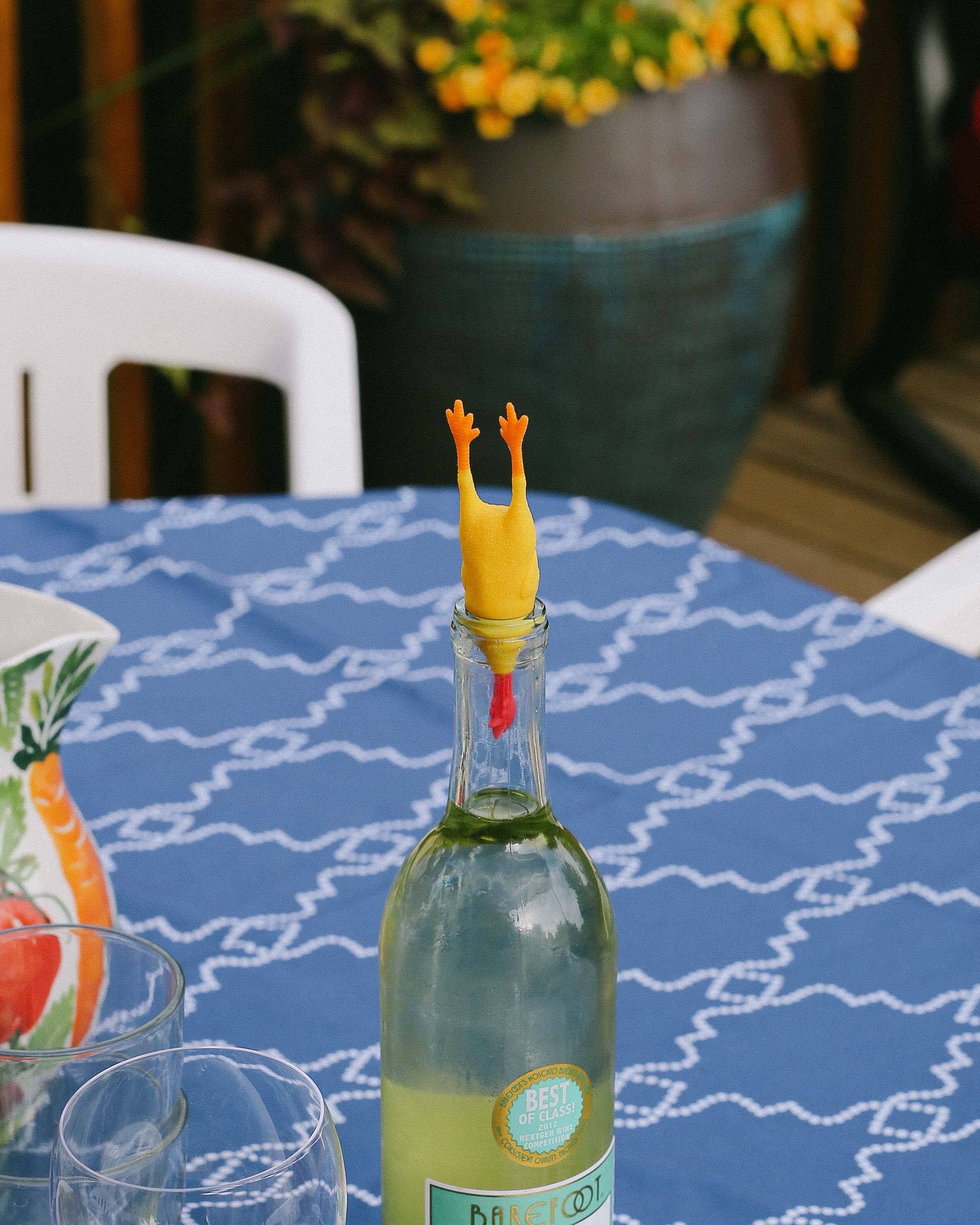In the beginning of many cookbooks, there is a chapter with no pictures where the chef/author talks about the foods they like to keep on hand at any given time, how to stock a pantry properly, etc. Sometimes they'll go over unique ingredients - what they are, where to find them, why you should use them - or pieces of equipment that they can't live without that they've added to their finely curated list of kitchen gadgetry. Or maybe they'll talk a bit about their process - how they clean as they cook, or how they write out recipes on post-its that they stick on the counter while they work. The abundance of care and work that go into creating this pantry/equipment/process chapter is obvious. You know? Don't you usually read this section?
Yeah, me neither. I want to look at the pretty pictures already.
But when I went to see family for Thanksgiving, I ended up going to a spice shop I've been wanting to check out for a while and subsequently dropped a fair amount of cash on some spices I've been having trouble finding (and some that I have never seen before but am so excited to use). And then I came home to our hap-hazard pantry with its crazy amount of beans and nearly empty boxes of pasta, and thought "This is no place for my spices!" So I cleaned out the shelves, reorganized everything, and took note of stuff that was about to run out, and I now have a well-oiled pantry machine. I didn't expect that it would have a profound effect on my efficiency and enjoyment of cooking, but it did! It is crazy! I have joined the Clean Pantry Cult and I am going to prosthelytize to anyone who will listen!!
One of these days I'll write a post on the things that are in my pantry (there will be pictures, promise), but let's talk about this flatbread for a moment. I get most excited by foods with flavor contrasts (salty/sweet, rich/bright, etc.), and I wanted to bring that kind of excitement to this recipe so that it didn't feel like an "I don't know what to make for dinner" kind of a meal (which it most definitely was). It worked sort of like this:
If I ever publish a cookbook, there will be a lot of Venn diagrams (which will probably break up the text a bit in my pantry section, which y'all had better read).
There are so many ingredients that fall into each of these categories (I even listed a few more than I put on the flatbread), so don't feel like you have to limit yourself to what I did, especially because the whole point of this thing is to utilize stuff you have on hand! Just grab a prepared crust or some pizza dough and something bright and fresh on your way home from work, and you'll have a tasty, simple, and homemade meal in the time it takes to order a pizza.
(A quick pantry tip: buy things that you use frequently every time you go to the store, whether you need them immediately or not! I do this with onions, sweet potatoes, and lemons, because I use them multiple times throughout the week, if not every day. And I'll usually also buy some arugula or spinach every week because a pop of green easily takes something from blah to beautiful.)
Makes 1 flatbread; serves 4 as a light main, or 6-8 as an appetizer/snack
Aleppo pepper flakes are different from the standard red pepper flakes you can find in the spice aisle, and they are certainly different from the packets that come when you order a pizza to go. Instead of punching the inside of your mouth with heat, these flakes are bright, tart, and pleasantly warming. I don't know if this reflects a level of quality, but the flakes I purchased are also just pepper flakes, with no included seeds. You can find them at specialty stores or online, and a little jar will last you for quite some time.
Also, keep in mind that this is not a pizza, so there is no ooey-gooey-cheesy base holding all of the ingredients on board. Some things will bake together, and some things will be looser. If you want a more cohesive flatbread, omit the olive oil that you drizzle over the dough and replace it with a generous smear of creme fraîche.
1 pound pizza or flatbread dough (I grabbed a container of prepared dough at Whole Foods)
olive oil
1 red onion, thinly sliced from top to tail
1/4 cup white wine (optional) or water
kosher salt
4 oz bacon, sliced into lardons
1/3 cup pitted kalamata olives, torn in half with your fingers
4 oz feta cheese (I used goat's milk feta)
flaky sea salt (I used Maldon)
a couple of handfuls of arugula
Aleppo pepper or other red pepper flakes
About an hour before you want to bake the flatbread, remove the dough from the refrigerator to proof and come to room temperature (it will bake more evenly and be much, much easier to work with).
Preheat your oven to 425˚F. Line a baking sheet with parchment paper.
Place a heavy-bottomed skillet over medium low heat, and add a generous swig of olive oil (enough to coat the bottom of the pan). Add the onions to the oil and sauté, stirring frequently, until they soften and begin to become translucent. Add the white wine and a pinch of kosher salt to the pan and cook for another 2-5 minutes, until the wine has evaporated and the onions are quite limp, but not falling apart. (Note: you do not need to caramelize them to a darker color unless that is what you want; I happen to like some of the brighter purple on the flatbread, and they'll get a little charred anyway during baking.) Remove the onions to a small bowl and set aside.
Place the pan back over the heat and add the bacon lardons. Cook, watching closely (and occasionally stirring), until the lardons are just barely cooked and beginning to get crispy edges. Remove the lardons to a paper towel-lined plate and drain.
Remove the pizza dough from its container and stretch with your hands, pizza parlor style. Don't worry about it being perfect or crazy-thin! Rustic looks best here, so just stretch it as much as you can without tearing the dough.
Place the dough on the parchment-lined baking sheet, and drizzle the dough with a little olive oil. Spread the onions over the dough, and scatter with the bacon and olives. Crumble the feta cheese over the bacon and olives. Gently press the toppings into the dough, just enough to help them stick to the surface while baking (not so much that the dough envelops them and they cannot be seen).
Bake at 425˚F until the dough is fully cooked and the onions at the edge of the dough are crisp and a little charred, about 20-25 minutes (check after 20 minutes). Remove from the oven and let cool for 5-10 minutes, then top with a couple of handfuls of arugula, and some generous pinches of flaky salt and Aleppo pepper flakes.




















